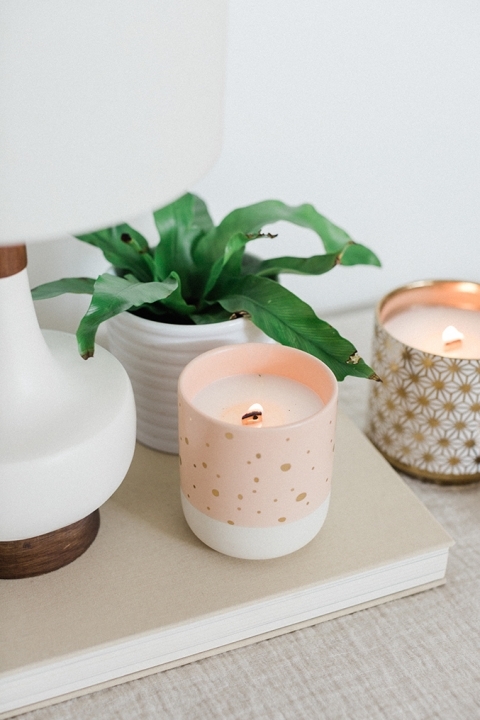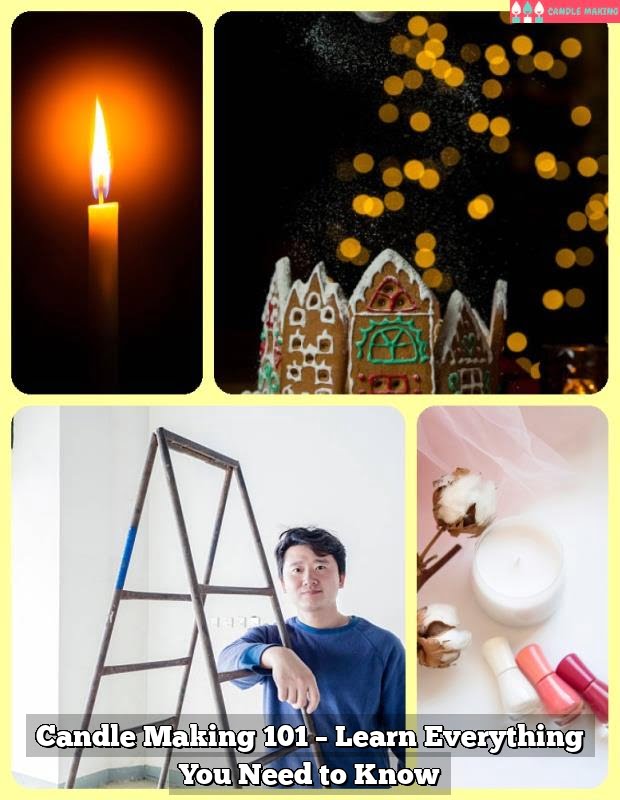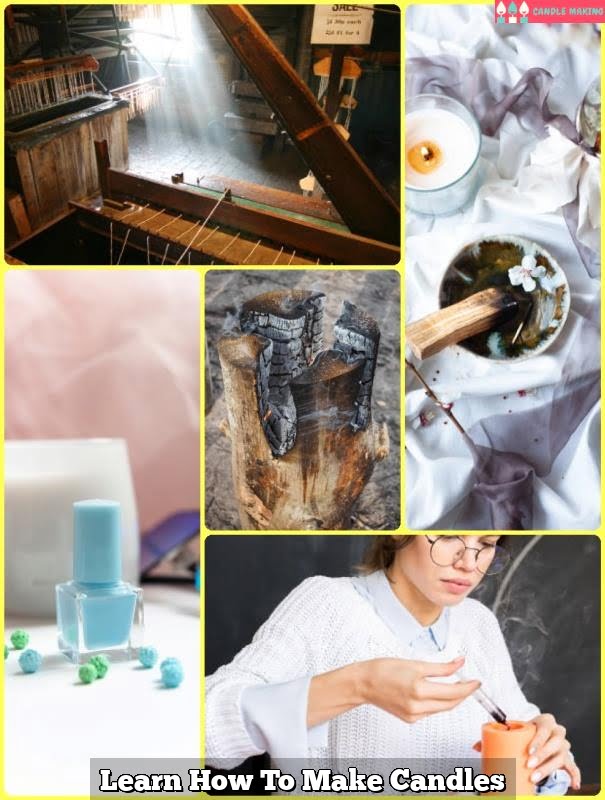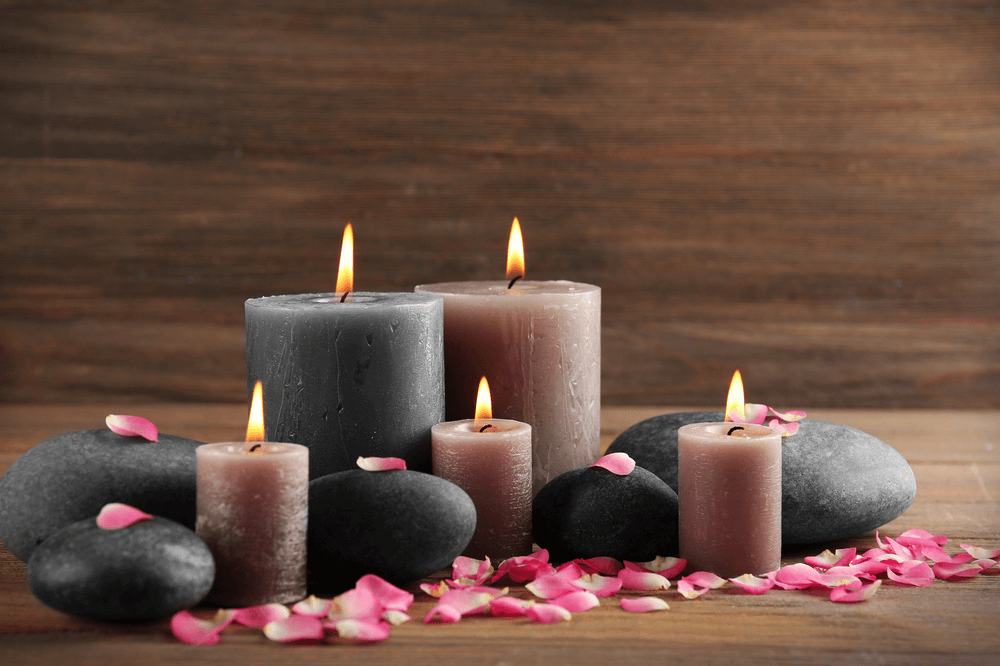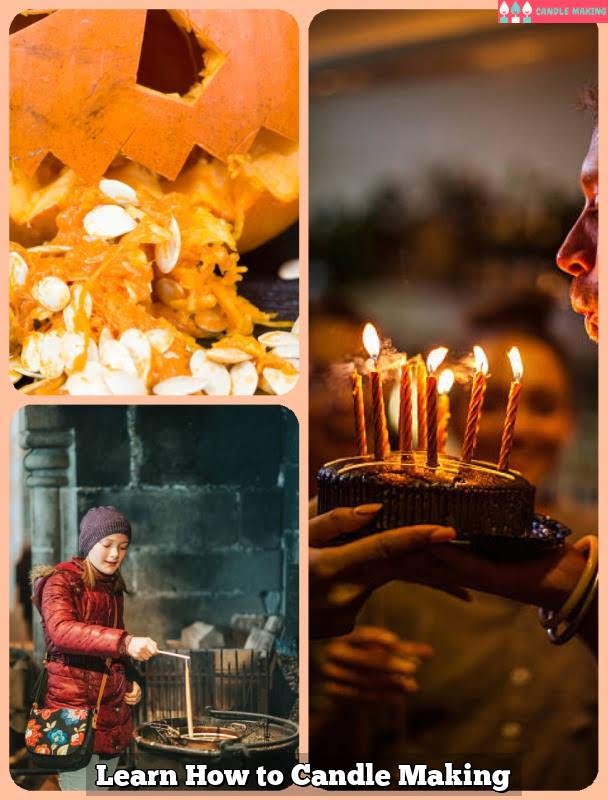Are you interested in learning how to make your own candles? Whether you’re a beginner or an experienced crafter, candle making is a rewarding and creative hobby that allows you to express your personal style and create unique gifts for friends and family. In this article, we will explore the art and craft of candle making, from its ancient origins to the modern-day techniques used by artisans and hobbyists alike.
Candle making has a rich history that dates back to ancient times when candles were essential sources of light. Today, it has evolved into a popular craft that allows individuals to unleash their creativity and produce beautiful handmade candles for personal use or as unique gifts. We will delve into the history of candle making, exploring its evolution from traditional methods to the modern techniques used today.
From choosing the right wax to adding fragrance and color, we will take you through the essential tools, materials, and techniques needed to get started with candle making. Whether you prefer traditional paraffin wax or organic soy wax, understanding the different types of wax and their properties is crucial in creating high-quality candles.
Additionally, we will provide step-by-step instructions for beginners, troubleshooting tips for common issues, and guidelines for working safely with hot wax and fragrance oils. Join us on this journey as we uncover the artistry of handcrafted candles.
History of Candle Making
Candle making has a rich and diverse history that spans ancient civilizations to modern day crafters. The art of candle making can be traced back to as early as 3000 BC when the Egyptians are believed to have created the first wicked candles using tallow. From there, various cultures around the world developed their own methods and materials for creating candles, each influenced by their geographic location and available resources.
In ancient Rome, candles were primarily made from tallow or beeswax, and were used for practical purposes such as lighting homes and temples. The Middle Ages saw the introduction of taper candles made from tallow or beeswax, which became a symbol of prosperity and were often used in religious ceremonies. During the 19th century, the Industrial Revolution brought about advancements in candle making with the introduction of stearin and paraffin waxes, leading to the mass production of candles.
Today, candle making has become a popular hobby and small business venture for many people around the world. With access to a wide variety of waxes, fragrances, dyes, and molds, contemporary candle makers have endless opportunities for creativity. Whether you’re interested in learning how to make candles for personal use or as a potential source of income, understanding the history of candle making provides valuable insights into traditional techniques and materials that have stood the test of time.
- Ancient Egypt: Tallow candles
- Ancient Rome: Taper candles made from tallow or beeswax
- Middle Ages: Symbolism of prosperity
- 19th Century: Advancements in wax production during Industrial Revolution
Candle enthusiasts today can appreciate this rich history while also utilizing modern tools and techniques to create their own unique and personalized candles.
Getting Started
When it comes to learning how to make candles, getting started with the right tools and materials is essential. Having the proper equipment not only makes the process easier but also ensures that your candles turn out beautifully. Here’s a guide to help you navigate through the essential tools and materials needed for candle making.
First and foremost, you will need a double boiler or a dedicated wax melting pot to melt your wax. This will help you heat the wax evenly without risk of scorching. Additionally, a reliable thermometer is crucial for monitoring the temperature of the melted wax, as different types of wax require specific temperatures for optimal results.
In terms of materials, choosing the right type of wax is key. There are various options available such as paraffin, soy, beeswax, and more, each with its own unique characteristics. It’s important to do your research and select the wax that best suits your desired outcome. In addition to wax, you’ll also need wicks, fragrance oils or essential oils for scent, dye blocks or liquid dye for color, and containers or molds to shape your candles.
Learning how to learn candle making also involves understanding where to source these materials from reputable suppliers. Luckily, there are numerous online retailers and local craft stores that offer a wide variety of high-quality candle making supplies for beginners and experienced crafters alike. By investing in good quality tools and materials from the start, you can set yourself up for success in this enjoyable hobby.
Choosing the Right Wax
When it comes to learning how to make candles, one of the most crucial decisions you’ll have to make is choosing the right wax. There are several different types of waxes available, each with its own unique properties and characteristics that can affect the final outcome of your candles. Understanding the differences between these waxes will help you create beautiful, high-quality candles that burn well and hold scent effectively.
The most common types of candle wax include paraffin wax, soy wax, beeswax, and coconut wax. Paraffin wax is widely used in candle making due to its affordability and ease of use. Soy wax, on the other hand, is a natural alternative that is popular among environmentally conscious individuals.
Beeswax has a natural honey scent and produces long-lasting, clean-burning candles. Coconut wax is known for its ability to hold a higher fragrance load than other waxes, resulting in strong-scented candles.
Each type of wax offers unique benefits and challenges when it comes to candle making. For example, paraffin wax can be tricky to work with in terms of fragrance retention, while soy wax requires specific techniques for optimal burning performance. By understanding these differences, you can choose the best wax for your specific needs and preferences.
| Wax Type | Key Characteristics |
|---|---|
| Paraffin Wax | Affordable, easy to work with, but may have limited scent throw |
| Soy Wax | Natural, environmentally friendly option with excellent scent throw but requires specific techniques for optimal burning performance |
Understanding these differences will allow you to make an informed decision about which type of wax is best suited for your candle making projects. As you continue to learn about candle making and experiment with different types of waxes, you’ll gain valuable insight into how each one performs and be able to create candles that meet your desired aesthetic and functional qualities.
Fragrance and Color
Adding fragrance and color to your candles can truly elevate the overall experience of candle making. Whether you prefer a subtle scent or a vibrant color, the possibilities are endless when it comes to customizing your handmade candles. In this section, we will explore the different options available for adding fragrance and color to your creations.
When it comes to selecting fragrances for your candles, there are countless options to choose from. Essential oils and fragrance oils are popular choices for adding scent to candles. Essential oils are derived from natural sources such as plants and flowers, providing a more organic and subtle aroma. On the other hand, fragrance oils are synthetic but offer a wide range of scents that may not be achievable with essential oils alone.
In addition to selecting the right fragrance, choosing the perfect color for your candles is equally important in creating a visually appealing product. Dyes specifically formulated for candle making come in a variety of colors and forms such as liquid, chips, or blocks.
It’s essential to consider the type of wax being used when choosing a colorant, as not all types of dye are compatible with every wax. Taking time to experiment with different color combinations and techniques can lead to stunning results that perfectly complement the chosen fragrance.
Learning how to learn candle making should include an understanding of how different fragrances interact with various colors and how they affect the overall aesthetic appeal of your handmade candles. By experimenting with different scents and colors, you can create unique and personalized candles that reflect your personal style and creativity.
The Candle Making Process
Gathering Your Materials
Before you start the candle making process, it’s important to gather all the necessary materials. This includes wax, a double boiler or melting pot, a thermometer, fragrance oils, colorants, wicks, and containers or molds for your candles. Make sure to set up a clean and organized workspace to avoid any accidents.
Measuring and Melting the Wax
The first step in making candles is measuring and melting the wax. It’s crucial to use a thermometer to ensure that the temperature of the melted wax is just right for adding fragrance oils and colorants. Different types of wax have different melting points, so it’s important to follow specific guidelines depending on the type of wax you’re using.
Adding Fragrance and Color
Once the wax has reached the correct temperature, you can add fragrance oils and colorants according to your preference. Be sure to mix these additives thoroughly into the melted wax to ensure an even distribution in your finished candles. Experiment with different scents and colors to create unique and personalized candles.
Learning how to make candles requires patience and practice when following these step-by-step instructions for beginners. As you become more experienced in candle making, you can begin exploring advanced techniques such as using different molds, embeds, and decorative finishes to enhance your creations.
Troubleshooting Common Issues
Identifying Common Candle Making Issues
When learning how to make candles, it’s important to be aware of the common issues that can arise during the process. This can include problems such as uneven burning, frosting, sinkholes, or wick-related issues. Understanding these potential challenges will help you troubleshoot and avoid them in your own candle making endeavors.
Tips for Avoiding Mistakes
One of the best ways to avoid common candle making issues is to carefully follow a reliable recipe or tutorial. By measuring your ingredients accurately and following each step closely, you can minimize the risk of encountering problems. Additionally, paying attention to details such as pouring temperature, fragrance load, and wick size can make a significant difference in the quality of your finished candles.
Achieving Perfect Results
To achieve perfect results in candle making, it’s essential to practice patience and precision. Taking the time to understand each aspect of the process, from selecting the right wax and fragrance oils to mastering pouring techniques and curing times, will contribute to the overall success of your candles. Additionally, don’t be afraid to experiment and learn from any mistakes that may occur – this is all part of the learning process when delving into the art of candle making.
By familiarizing yourself with common issues and implementing these tips for avoiding mistakes, you can enhance your candle making skills and create beautiful, high-quality candles that you can be proud of.
Advanced Techniques
Once you have mastered the basics of candle making, it’s time to take your skills to the next level by experimenting with advanced techniques. One way to do this is by trying out different molds, embeds, and decorative finishes to create truly unique and personalized candles. By incorporating these elements into your candle making process, you can elevate the aesthetic appeal of your creations and make them stand out from store-bought candles.
When it comes to using different molds, there are endless possibilities to explore. You can experiment with various shapes and sizes to create candles that are not only visually appealing but also functional. Silicone molds are a popular choice among candle makers due to their flexibility and durability. Additionally, you can also try using unconventional items as molds, such as vintage teacups or seashells, for a one-of-a-kind look.
Another way to enhance your candles is by adding embeds, which are decorative objects that are placed within the wax. This could include dried flowers, herbs, or crystals that add an extra dimension to your candles. Embeds not only add visual interest but can also provide a delightful surprise when the candle is burned and the object becomes visible.
Finally, playing around with decorative finishes such as glitter, metallic accents, or layered colors can elevate the overall look of your candles. These finishing touches can add a touch of glamor or whimsy to your creations and make them truly unique. By embracing advanced techniques in candle making, you can unleash your creativity and produce stunning candles that showcase your personal style and artistic flair.
Safety Precautions
When it comes to learning how to make candles, safety should always be a top priority. Working with hot wax and fragrance oils can pose potential risks, but by following some important guidelines, you can ensure a safe and enjoyable candle making experience.
First and foremost, it’s crucial to have the right protective gear when working with hot wax. This includes heat-resistant gloves and long-sleeved clothing to protect your skin from accidental spills or splatters. Additionally, using a dedicated workspace with good ventilation can help minimize the risk of inhaling potentially harmful fumes from the melting wax.
When it comes to handling fragrance oils, it’s important to keep in mind that they are highly concentrated and should be handled with care. Always use them in a well-ventilated area, and avoid direct contact with the skin or eyes. Properly labeling all fragrance oils and keeping them out of reach of children and pets is also essential for maintaining a safe work environment.
Lastly, never leave melting wax unattended, as it can quickly become a fire hazard. Always have a fire extinguisher nearby and familiarize yourself with how to use it in case of an emergency. By following these safety precautions, you can enjoy the art of candle making while minimizing any risks associated with working with hot wax and fragrance oils.
Conclusion
In conclusion, learning the art of candle making can be a rewarding and enjoyable experience for anyone interested in exploring their creative side. From understanding the rich history of candle making to mastering the step-by-step process, there are countless opportunities to express oneself through this timeless craft.
By following the essential tools and materials needed, as well as learning about different wax types and their properties, beginners can gain a strong foundation in candle making. Additionally, adding fragrance and color to candles allows for endless customization and personalization.
As you embark on your journey into candle making, don’t be afraid to experiment with advanced techniques such as using different molds, embeds, and decorative finishes. This not only enhances your skills but also adds unique flair to your handmade candles. However, always remember to prioritize safety by following important guidelines for working with hot wax and fragrance oils. By taking necessary precautions, you can continue enjoying the process of creating beautiful candles without any preventable accidents.
Frequently Asked Questions
How Profitable Is Candle Making?
Candle making can be a profitable business if you are able to create high-quality, unique candles that appeal to your target market. With the right marketing and sales strategy, it is possible to make a good profit from candle making.
Is It Hard to Learn How Do You Make Candles?
Learning how to make candles is not necessarily hard, but it does require some patience and practice. There are many resources available, including books, online tutorials, and workshops that can help beginners learn the necessary techniques for candle making.
How Do You Start Making Candles for Beginners?
To start making candles as a beginner, it’s important to first gather all the necessary supplies such as wax, wicks, fragrance oils, and molds. Next, learn the basic techniques of melting the wax, adding fragrance, pouring into molds, and setting the wicks. Practice these steps to improve your skills before moving onto more complex candle-making techniques.

Welcome to my candle making blog! In this blog, I will be sharing my tips and tricks for making candles. I will also be sharing some of my favorite recipes.

